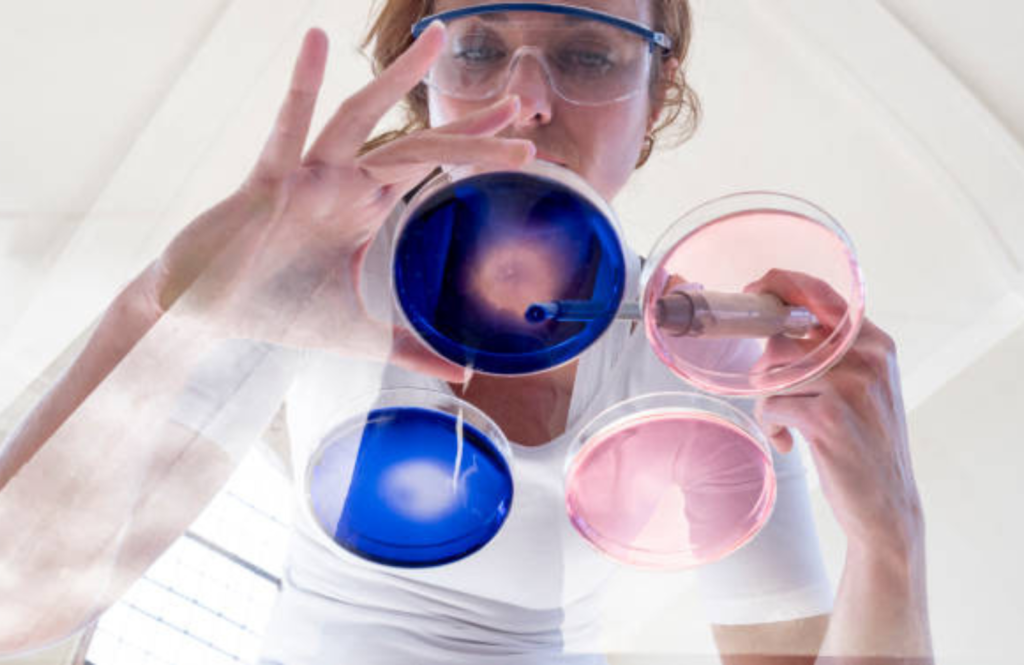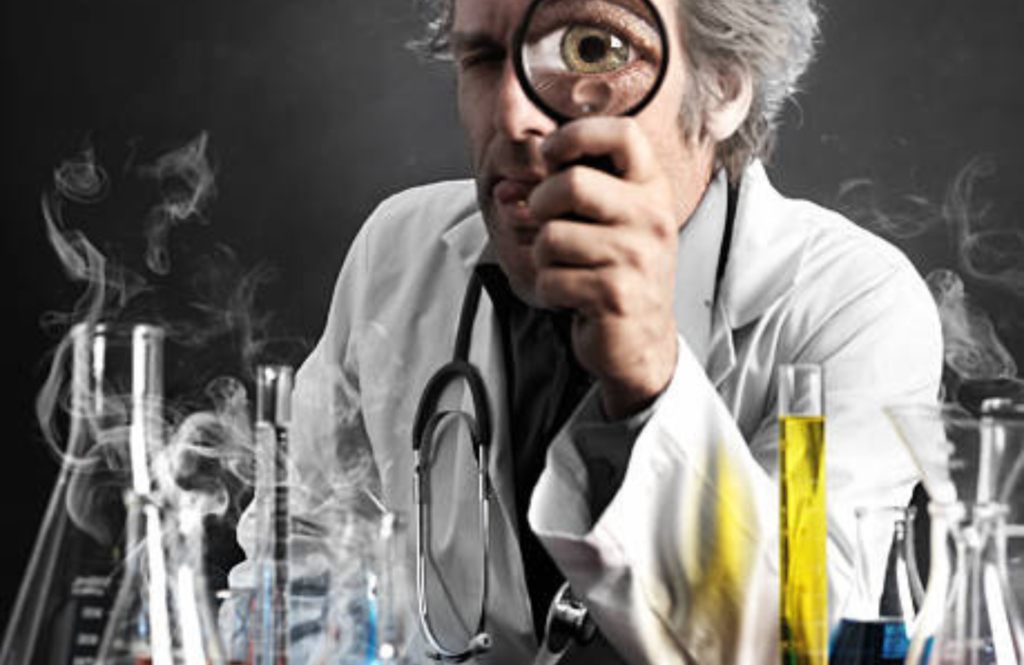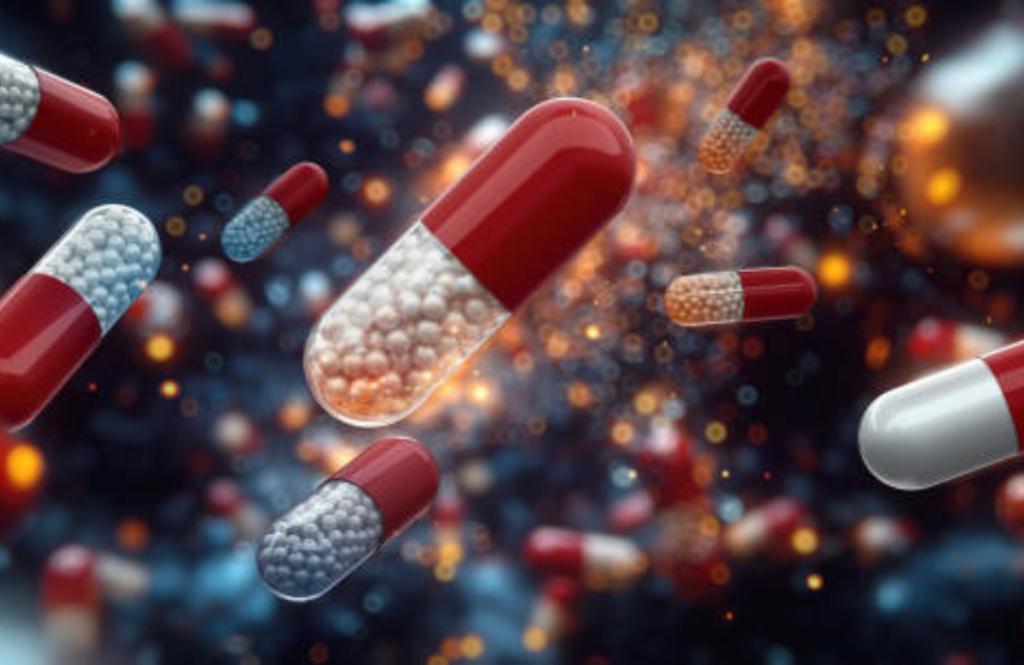The Psychedelic Renaissance in Medicine
Imagine a world where the very drugs once dismissed as mind-bending curiosities become the foundation of the next medical revolution.
That’s not science fiction anymore — it’s happening right now.
Once banished from labs and labeled taboo, psychedelics like psilocybin, DMT, and LSD are returning to the scientific spotlight. But this time, it’s not about chasing hallucinations — it’s about healing. Researchers across the globe are uncovering something extraordinary: these compounds may fight inflammation, the silent force driving many of today’s deadliest and most debilitating diseases.
From depression and arthritis to heart disease and neurodegenerative disorders, inflammation is now recognized as the common thread linking a host of chronic conditions. Traditional anti-inflammatory drugs — especially steroids — can bring relief, but they come with steep costs: immune suppression, hormonal imbalance, and long-term side effects.
What if there was a way to calm the immune system without weakening it?
Enter psychedelics — an entirely new class of anti-inflammatory agents that may do just that.
This new frontier isn’t about tripping; it’s about transforming medicine. Early research suggests psychedelics could rebalance immune activity, reduce harmful cytokines, and even repair neural damage — all without shutting down the body’s natural defenses.
As scientists peel back decades of stigma, they’re finding that what was once seen as a cultural rebellion might become a medical revolution.
Inflammation: The Hidden Driver Behind Chronic Diseases
Let’s begin with a compelling piece of evidence: In a controlled human trial, healthy volunteers who received a single dose of Psilocybin (0.17 mg/kg) showed a rapid reduction in the pro-inflammatory cytokine TNF-α, followed by sustained reductions in IL-6 and CRP seven days later.
This study highlights how inflammation quietly fuels a wide range of chronic illnesses:
- Chronic activation of immune signalling molecules (such as TNF-α, IL-6, and CRP) is implicated in:
- Autoimmune and inflammatory diseases (e.g., Rheumatoid arthritis, Asthma)
- Mood conditions such as Major depressive disorder where elevated cytokines correlate with symptom severity
- Cardiovascular disease and neurodegenerative disorders, where inflammation contributes to tissue damage and progression
- Autoimmune and inflammatory diseases (e.g., Rheumatoid arthritis, Asthma)
- Traditional anti-inflammatory treatments (like steroids) often blunt immune activity but can also inhibit healthy immune responses — a major drawback. The emerging research on psychedelics suggests a possibility of modulating rather than suppressing inflammation.
- Key receptors and pathways are involved in this process:
- The 5‑HT2A receptor (a serotonin receptor) appears central to how psychedelics exert immune and inflammatory effects.
- Cellular studies show that some psychedelics reduce expression of markers like IL-6, ICAM-1 and VCAM-1 in vascular smooth muscle cells.
- The 5‑HT2A receptor (a serotonin receptor) appears central to how psychedelics exert immune and inflammatory effects.
How Psychedelics Influence the Immune System
In the pivotal review “Are we hallucinating or can psychedelic drugs modulate the immune system to control inflammation?” (published in the British Journal of Pharmacology) the authors found that psychedelics which activate the 5-HT₂A receptor also show measurable changes in immune response — including the suppression of pro-inflammatory cytokines.
Here’s a breakdown of what mechanisms are emerging from the research:
Key Mechanisms at Play
- Many psychedelics act via the serotonin receptor subtype 5-HT₂A, which is not only expressed in brain cells but also on immune-related cells.
- These agents influence downstream cellular pathways involving genes like NF-κB and MAP-kinases that are central to inflammatory responses.
- Importantly, in some experiments, the anti-inflammatory effect appears to be distinct from the hallucinogenic effect — meaning the immune modulation may happen via different molecular routes than the psychedelic experience itself.
Potential Benefits of This Mechanism
- Because these drugs may modulate inflammation without broadly suppressing immune function (as steroids often do), they hold promise as a gentler alternative.
- The ability to target the “neuro-immune interface” suggests applications not only for mood disorders but also for diseases where brain and immune systems overlap (e.g., neuroinflammation in Alzheimer’s, multiple sclerosis).
The dissociation between “trip” effects and immune effects opens the possibility of designing next-gen compounds that retain therapeutic immune benefits but avoid psychedelic experiences.
Important Caveats
- The research is still early. Many studies are preclinical (cells or animals) or small-scale in humans.
- The immune response is highly context-dependent. Some psychedelics in some conditions might promote inflammation rather than suppress it (depending on dose, timing, baseline state).
- Blinding in psychedelic research is inherently difficult (it’s obvious to participants if they’re “trip-ping”), which complicates interpretation of results (including immune-marker changes) because of expectancy effects.
Translating mechanism to treatment is non-trivial — these compounds must be shown safe, effective, and consistent in targeted populations before real clinical use.
Psilocybin’s Anti-Inflammatory Potential: A New Hope for Healing
When most people hear “magic mushrooms,” they think of colors, visions, and altered states of mind. But behind the trip lies something far more extraordinary — a biological ripple that calms the storm of inflammation within the body.
Psilocybin, the active ingredient in these mushrooms, doesn’t just affect your perception; it also influences the very molecules that drive pain, swelling, and disease. After just one guided experience, participants in early trials reported not only mood elevation but also a sense of physical lightness — as though their bodies had “exhaled.”
Here’s why this matters:
- It’s fast-acting. Traditional anti-inflammatory drugs can take weeks to balance immune markers, while psilocybin seems to start working within days.
- It’s holistic. Instead of suppressing the immune system like steroids, psilocybin helps restore equilibrium — tuning inflammation down rather than shutting it off.
- It’s lasting. Some participants experienced benefits that persisted for weeks, long after the psychedelic effects faded.
Even more fascinating, reductions in inflammation often correlate with mood improvements. This supports the emerging view that depression and inflammation aren’t separate enemies — they’re intertwined. By lowering inflammatory molecules, psilocybin may be tackling both emotional and biological pain at once.
Imagine a future where a single, guided psychedelic session not only lifts your mood but also quiets chronic inflammation in your joints, heart, or brain. It sounds almost mystical, but the science is pointing toward exactly that.
The journey of psilocybin is just beginning — and it’s quickly becoming one of the most promising tools in our quest to heal both mind and body.
Ayahuasca and DMT: Ancient Medicines, Modern Insights
Deep in the Amazon rainforest, long before modern medicine existed, healers brewed a sacred drink known as Ayahuasca — a blend of plants that open the mind and, as we’re now learning, may also heal the body.
At the heart of this brew lies DMT (dimethyltryptamine), a natural compound that induces vivid visions and profound emotional release. But beyond the mystical experience, something remarkable happens beneath the surface — the body’s inflammatory response begins to calm.
Many who’ve participated in ayahuasca ceremonies describe not only emotional breakthroughs but also a physical reset. Chronic aches feel lighter. Fatigue fades. Even sleep and digestion improve. Modern researchers are beginning to understand why: DMT and related molecules appear to reduce inflammatory markers, helping restore the body’s balance.
What makes this especially intriguing is the connection between mood and inflammation. People struggling with depression or burnout often have elevated levels of inflammatory proteins. When those levels drop, mood and motivation tend to rise — a link now being explored in both clinical studies and traditional healing contexts.
Ayahuasca, then, represents a fascinating bridge:
- Ancient wisdom meeting modern science — centuries of shamanic healing converging with molecular biology.
- Mind-body integration — emotional release paired with measurable physiological changes.
- Potential therapy evolution — offering insight into how psychedelics might naturally reset overactive immune systems.
In today’s world, where chronic inflammation silently drives conditions from anxiety to arthritis, these discoveries suggest something profound: healing may not always come in the form of another pill, but from reconnecting the mind and body in ways modern medicine is only beginning to rediscover.
Beyond the Trip: The Search for Psychedelic-Inactive Drugs
For decades, the power of psychedelics was dismissed because of one defining feature — the trip. The vivid hallucinations, ego dissolution, and emotional intensity were seen as barriers to mainstream medicine. But today, researchers are asking a radical question: What if we could keep the healing, and lose the hallucination?
This is where a new class of compounds enters the picture — psychedelic-informed but psychedelic-inactive drugs, often called Pipi drugs. These are chemically inspired by substances like psilocybin and DMT, but engineered to deliver their therapeutic and anti-inflammatory benefits without the mind-altering effects.
Imagine taking a medication that repairs your brain’s stress response, lowers inflammation, and lifts depression — all without ever feeling “high.” That’s the goal behind these next-generation compounds. Early prototypes, such as DLX-001 and DLX-159, are showing promising signs of doing just that. They seem to activate some of the same pathways as psychedelics, particularly those linked to serotonin receptors and immune modulation, but without triggering hallucinatory experiences.
This could open the door to a new era of medicine — one that combines the precision of pharmaceuticals with the holistic benefits of psychedelics, minus the social stigma or logistical hurdles of psychedelic therapy.
Myth vs. Fact
Myth 1: Psychedelics must cause hallucinations to work.
Fact: The therapeutic and anti-inflammatory benefits appear to stem from different biological mechanisms than the psychedelic experience itself.
Myth 2: These drugs only help with mental health conditions.
Fact: Emerging data suggests their benefits extend to systemic inflammation, which plays a role in diseases like arthritis, asthma, and cardiovascular disorders.
Myth 3: Psychedelics are addictive or unsafe.
Fact: Classical psychedelics like psilocybin and DMT are non-addictive and, when used in controlled settings, show a strong safety profile compared to many traditional medications.
Myth 4: Developing “non-trip” psychedelics removes their healing power.
Fact: Many researchers believe separating the hallucinogenic and therapeutic effects could make treatments more widely accessible while maintaining their biological benefits.
Comparing Psychedelics and Traditional Anti-Inflammatory Drugs
For decades, inflammation has been treated with a narrow toolkit — mainly steroids and NSAIDs (nonsteroidal anti-inflammatory drugs). These medications can be lifesavers, but they come at a cost. Steroids like prednisone suppress the immune system broadly, often leading to side effects such as fatigue, weight gain, hormonal imbalance, and even vulnerability to infections. NSAIDs, on the other hand, can irritate the stomach and strain the kidneys when used long-term.
Now imagine an alternative that doesn’t silence the immune system but teaches it to rebalance itself. That’s where psychedelics differ — they don’t shut down inflammation; they modulate it. Instead of acting like a blunt hammer, they behave more like a fine-tuned conductor, guiding the body’s natural responses back into harmony.
How They Differ
1. Mechanism of Action
- Traditional drugs: Block enzymes or hormones that trigger inflammation, such as COX-2 or cortisol pathways.
- Psychedelics: Work at the receptor level — particularly the 5-HT2A serotonin receptor — influencing both the nervous and immune systems to reduce overactive inflammatory signaling.
2. Immune Balance
- Traditional drugs: Often suppress the immune system across the board, increasing infection risk.
- Psychedelics: Seem to calm inflammation without fully shutting down immune defenses, preserving healthy immune function.
3. Mind-Body Connection
- Traditional drugs: Target only the physical symptoms.
- Psychedelics: Impact both mental and physical health simultaneously, lowering inflammation while improving mood and emotional regulation.
4. Long-Term Impact
- Traditional drugs: Require continuous use to maintain results and can lead to dependency.
- Psychedelics: Some studies suggest a single guided session can create measurable immune changes lasting weeks — perhaps even longer.
The Placebo Problem in Psychedelic Research

One of the biggest challenges in studying psychedelics isn’t chemistry — it’s psychology.
When someone takes a psychedelic drug, they know it. The visual distortions, the altered sense of time, the emotional intensity — none of that can be faked with a sugar pill. That means researchers face a serious issue: how do you measure true biological change when the experience itself might influence the results?
In clinical science, the gold standard is the double-blind placebo-controlled trial — where neither the participant nor the researcher knows who got the real drug. But with psychedelics, the intense effects make blinding nearly impossible. If participants realize they’re on the actual substance, their expectations can change everything from mood to stress levels, and possibly even their inflammation markers.
That’s not just a technical issue; it’s a biological one. The mind-body link is so powerful that belief alone can influence physiological responses like immune activity. So if a participant expects healing, their body might respond as though it’s happening — regardless of the chemical in their bloodstream.
Why This Matters
- The placebo effect can blur results, making it hard to know whether the drug itself or the experience caused the benefits.
- Mood improvements often come hand-in-hand with biological changes, but untangling which came first is tricky.
- Researchers are now testing “active placebos” — mild psychoactive substances that mimic some sensations of psychedelics — to keep participants guessing and make results more reliable.

Why This Matters
The exploration of psychedelics as anti-inflammatory agents is entering one of its most exciting phases. What began as small, controlled experiments on mood and inflammation is now expanding into real-world medical applications. Researchers are looking beyond the brain — toward chronic diseases that affect millions.
Here’s how psychedelics could transform future treatments across multiple fronts:
1. Autoimmune and Inflammatory Disorders
- Psychedelics may help regulate immune activity rather than suppress it, offering new hope for conditions like:
- Rheumatoid arthritis – where overactive immune cells attack joint tissue.
- Asthma – characterized by inflammatory pathways in the lungs that psychedelics may calm through serotonin receptor modulation.
- Inflammatory bowel disease (IBD) – where gut inflammation could be reduced through serotonin-linked immune signaling.
- Rheumatoid arthritis – where overactive immune cells attack joint tissue.
- Unlike steroids, which blunt the immune system broadly, psychedelics could promote a balanced immune response without weakening defenses.
2. Neuroinflammation and Brain Health
- Chronic inflammation in the brain is increasingly linked to Alzheimer’s, Parkinson’s, and depression.
- Psychedelics like psilocybin and DMT can cross the blood–brain barrier, potentially reducing inflammatory molecules that damage neurons.
- Early studies suggest they might also stimulate neural plasticity and repair, protecting brain function over time.
3. Recovery from Traumatic Brain Injury (TBI)
- Psychedelics show early promise in reducing inflammation after brain injury, which could minimize long-term cognitive decline.
- Compounds like DMT may also activate growth pathways that encourage neurons to heal and reconnect.
This dual action — calming inflammation and promoting repair — could make psychedelics uniquely suited for post-injury recovery.
4. Integrative Mind-Body Therapies
- The future of treatment may combine psychedelics with holistic approaches such as:
- Mindfulness and breathwork – reinforcing neural calm and emotional regulation.
- Anti-inflammatory nutrition – complementing molecular-level benefits with lifestyle support.
- Guided psychotherapy – helping patients translate biological healing into lasting emotional change.
- Mindfulness and breathwork – reinforcing neural calm and emotional regulation.
- This integrated model could redefine chronic care by treating inflammation not just as a symptom, but as a manifestation of stress, trauma, and imbalance.
5. Clinical and Pharmaceutical Horizons
- Next-generation “non-hallucinogenic psychedelic-inspired drugs” are under development to deliver the same biological benefits without the trip.
- Larger clinical trials are now testing these compounds for safety, dosage, and long-term impact on inflammation-driven illnesses.
Within the next decade, these therapies could move from experimental labs into mainstream medical use, reshaping how we approach diseases rooted in chronic inflammation.
Ethical and Regulatory Challenges Ahead
As promising as psychedelic-based therapies appear, their path toward mainstream medicine is lined with ethical, regulatory, and cultural hurdles. The challenge isn’t just proving these compounds work — it’s about ensuring they’re used safely, fairly, and responsibly.
1. The Legal Landscape
- Most psychedelic substances, including psilocybin, LSD, and DMT, remain Schedule I controlled substances in many countries — legally defined as having “no accepted medical use.”
- This classification slows down research by requiring complex approvals, special licenses, and strict handling protocols.
- However, momentum is shifting. Regions like Oregon, Colorado, and parts of Canada have already decriminalized or authorized supervised therapeutic use, paving the way for broader acceptance.
2. Clinical Oversight and Safety
- Psychedelic therapy involves powerful psychological experiences that can’t be treated like standard prescriptions.
- Ethical practice demands trained facilitators and controlled environments to prevent psychological distress or misuse.
- Standardizing dosage, purity, and administration protocols remains a major regulatory goal.
3. Access and Equity
- There’s a growing concern that psychedelic therapy could become a luxury available only to those who can afford it.
- To ensure fairness, future systems must balance medical accessibility with professional guidance, making sure low-income or rural patients can also benefit.
- Insurance and healthcare systems will need to redefine how they classify and reimburse psychedelic-based treatments.
4. Intellectual Property and Indigenous Knowledge
- Many modern psychedelic therapies are rooted in indigenous practices, such as the ceremonial use of ayahuasca or peyote.
- Pharmaceutical companies patenting synthetic versions of these compounds raises ethical questions about cultural appropriation and benefit sharing.
- Respecting traditional knowledge while advancing scientific innovation will require collaboration rather than exploitation.
5. Long-Term Responsibility
- The goal isn’t just legalizing psychedelics — it’s integrating them ethically into modern healthcare.
- Regulations must evolve to ensure safety while allowing innovation to flourish.
- Scientists, therapists, and policymakers will need to work hand-in-hand to develop evidence-based frameworks that protect patients and preserve the integrity of this field.
Psychedelics have re-entered the medical stage with extraordinary promise — but their journey forward depends on more than data. It requires a balance of science, ethics, and respect for human experience. The true success of this movement will not be measured by how quickly these drugs reach pharmacies, but by how responsibly we use them to heal.
Conclusion: A New Era of Healing Without Hallucination
For decades, psychedelics were dismissed as relics of counterculture — too wild, too unpredictable, too dangerous to be medicine. Yet, as modern science revisits these ancient compounds, the narrative is changing. What was once taboo is now emerging as one of the most promising frontiers in medical innovation.
Researchers are discovering that the power of psychedelics extends far beyond the mind. By reducing inflammation, rebalancing immune responses, and promoting neural repair, these substances could revolutionize how we treat chronic illness. The beauty lies in their duality — working on both emotional and biological levels, where traditional medicine often sees a divide.
And now, with the rise of psychedelic-informed but non-hallucinogenic drugs, the dream of healing without hallucination is within reach. These compounds preserve the molecular magic of psychedelics — calming inflammation, lifting mood, restoring balance — all without the trip that once limited their clinical use.
The path ahead will not be simple. Regulation, accessibility, and ethical responsibility will determine whether this renaissance becomes a revolution or another fleeting moment in science. But one thing is certain: the boundaries between mind, body, and medicine are dissolving — and in their place, a new vision of healing is taking form.
As researchers, clinicians, and innovators continue this journey, psychedelics may very well transform from symbols of rebellion into tools of restoration — unlocking a future where healing is not just chemical, but deeply human.



